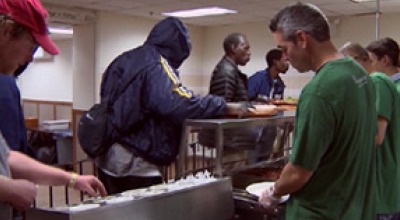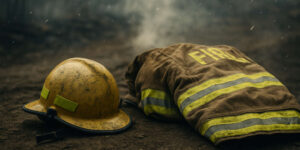Private Missions Restoring Hope to NYC’s Homeless
When Hurricane Sandy hit New York City last fall, thousands were forced from their homes. Months later, many are still displaced.
But shelters in the city have been providing a place to sleep for the homeless long before this crisis.
They’re also restoring hope.
Rebuilding Lives
The Bowery Mission in lower Manhattan first opened its doors to the city’s homeless in 1879. The shelter has been effectively rebuilding the lives of homeless people for more than 130 years.
Here they treat more than just the symptoms of homelessness–they treat the root causes of the problem.
Through the years the mission has provided food and shelter to thousands of people. Today, in this city of 8.4 million, its kitchen serves some 800 meals a day.
“We create nutritious hot meals from scratch from top food that we get from all over the city,” Ed Morgan, with the Bowery Mission, said. “While soup is a part of our menu, lobster is also a part, too. You can come here and get a nutritious meal any time.”
Last year the mission provided more than 30,000 bags of groceries and nearly 80,000 nights of shelter.
But its goodwill extends beyond food and housing. It also offers a six-month live-in drug and alcohol recovery program.
Participants are enrolled in computer classes where they receive hands-on training and job counseling.
Nourishing Souls
Over the years services have evolved. In the beginning, the mission only sheltered men. Today,women are welcome, too.
But some things have remained. Hymn-singing, prayer, and sermons in its chapel still provide nourishment to the souls of the city’s homeless.
James Macklin once owned his own cleaning business. That all changed when he started abusing alcohol and drugs.
“Cocaine destroyed me and all that I ever accomplished,” Macklin said.
He soon found himself sleeping under bridges and in subway stations.
He recalled the the first time he stepped through the chapel doors some 30 years ago.
“I sat all the way in the back of the chapel and pastor was preaching,” he told CBN News.
“I was looking around remembering my childhood and seeing all those marvelous scriptures on the wall,” he said. “They sung a song that I knew. I said, ‘Wow, what kind of place is this?'”
Finding Redemption
This place is where he found redemption, he said. Now, as director of outreach, he shares that same hope with others.
“I want to be the father to some that never had, the friend to some that never had–a true friend and say to them if I can do, it so can you,” Macklin said.
Donations from private citizens help the mission make a difference in the lives of men like Macklin. As a privately funded group it receives no government money, something that allows it to implement spiritual guidance in its programs.
“When you really change a man or woman’s heart it tends to last, especially if you support them after they graduate,” Morgan said.
“Four out of five of our graduates are still clean and sober a year later and that’s not true of secular programs,” he said. “That’s a wonderful result.”
Saving Lives, Saving Money
Those results cost a lot less to produce than at government-funded shelters, Morgan said.
“It does cost a good deal to do this,” he said. “So, we say for a man to go through our program and graduate clean and sober and connected to Christ and everything, it takes about $12,500.”
“But you contrast that with, for instance, it takes $20,000 a year just to warehouse a man in one of the city’s shelters and even more if he’s committed a crime and in jail,” he said.
Craig Mayes, with the New York City Rescue Mission, agreed.
“I’m thankful to the city for doing what it can in getting shelters and getting people off the streets and giving them food and shelter,” Mayes said. “But if you don’t address the deeper spiritual more fundamental issues of what it means to be a human being, I think you’re going to continue to have shelters that are full of people who come back day after day, week after week for the same thing.”
Mayes said the problem of homelessness is beyond the scope of local, state, and the federal government.
“I think it’s best in the hands of private individuals or organizations who this is what they do,” he said.
A Growing Need
City officials calculate that the number of homeless in New York is around 47,000. But with the rising cost of living, Mayes said he believes that number is much higher and on the rise.
“Some of us actually who are in this work think that number is like double, could be 100,000,” he said. “So the need is getting greater.”
Meanwhile, places like the Bowery Mission are sure to be around offering more than a helping hand.




























































